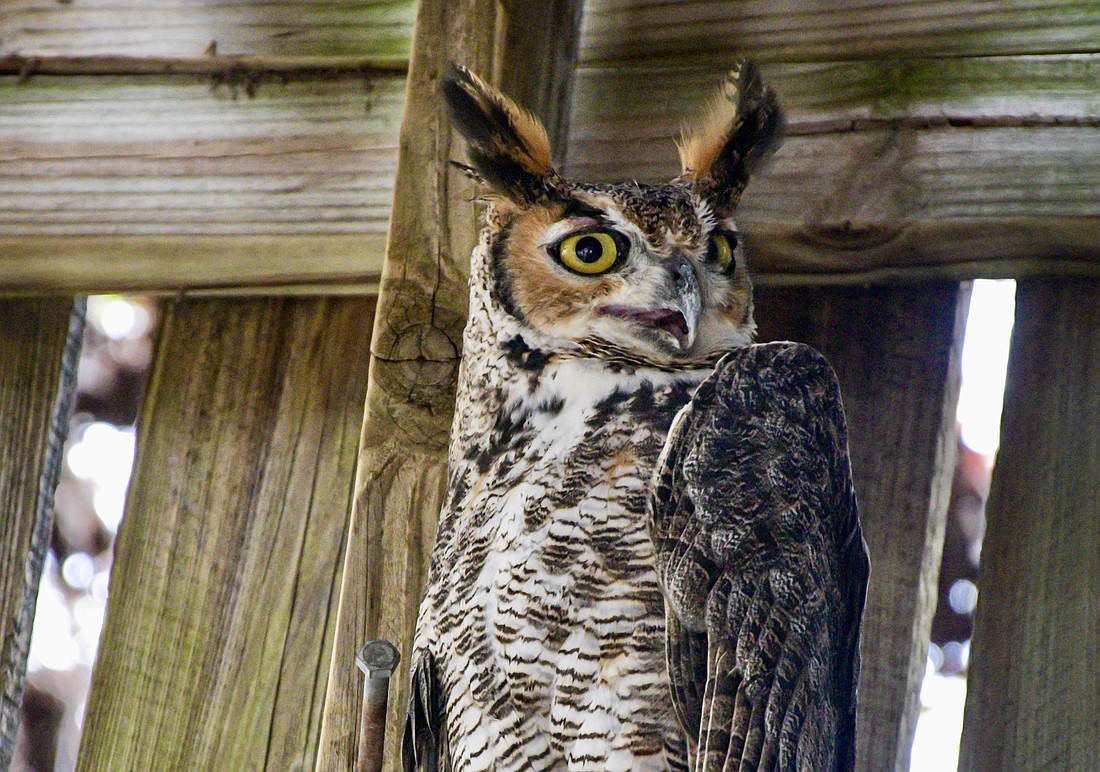- December 17, 2025
-
-
Loading

Loading

Great horned owls are the most common owl in the Americas, and the largest in Florida.
These voracious raptors, with their massive 5-foot wingspan and enormous yellow eyes, were poetically described by early naturalists as "winged tigers.''
The tall feather tufts on their heads, which are neither horns nor ears, are called plumicorns, meaning “feather horns” in Latin. As they break up an owl's outline, these tufts may be for camouflage; they improve its ability to blend into the environment while roosting in trees. Such an adaptation is advantageous for nocturnal birds such as great horned owls, who hunt at night, and roost during the day.
Great horned owls prefer wooded areas but live in many habitats across Florida. Using their acute hearing and powerful vision, they hunt an extremely wide variety of prey, including rodents, small mammals, and birds, even other owls.
As their wings have softly fringed feather edges, they can fly in near silence, thus taking their prey by surprise. Using their sharp talons and powerful grip, they then subdue and kill their prey. Their grip is capable of exerting upwards of 500 pounds of pressure per square inch. In comparison, a human grip averages about 40-50 psi and a pit bull terrier's bite force is 235 psi.
Though they have few natural enemies, like most birds, great horned owls are vulnerable to habitat loss because of to development. And, as they consume rodents and other small mammals, they are especially vulnerable to “secondary poisoning,” which happens when an animal eats prey poisoned by anticoagulant rodenticides. Finally, as they commonly forage at the same height as vehicles, great horned owls are particularly vulnerable to vehicle collisions.
Save our Seabirds is a non-profit organization whose mission is to rescue and rehabilitate sick and injured birds, releasing as many as they can, while educating our community about avoiding injuries and preserving habitats.